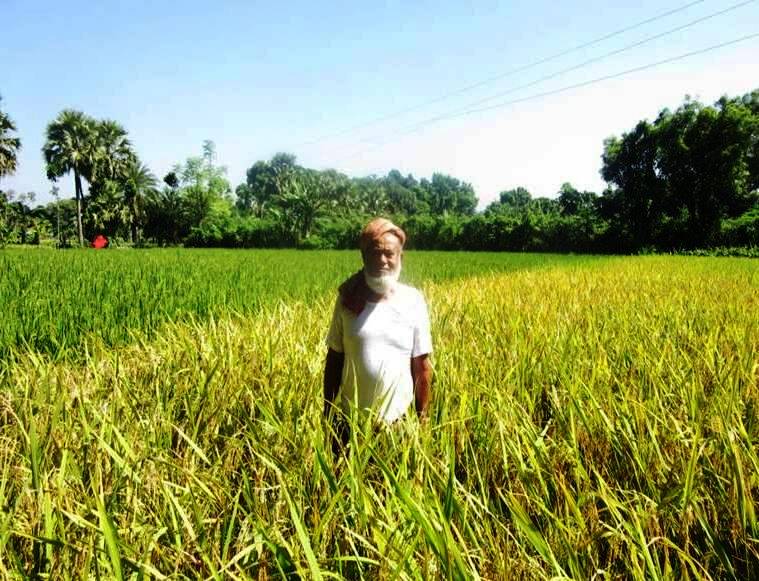Rezwan Seikh aged 57 years, son of Abu Bakkar Seikh lives in the village: Sujan Saha, union: Islamkathi, Upazila: Tala of Satkhira district. He has a family of three members (wife and one divorced daughter). He is a poor farmer having only 33 decimal cultivable lands and totally depended on the paddy production (two times in a year) from it. In the last three years, the average paddy (Aman) production on his land was 13-15 manuds. It was tough to maintain his family with such production. He was disappointed about the production as he used good quality paddy saplings and fertilizers and watered the field sufficiently.
In this circumstance, he attached to the project “Water for Food in the Coastal Area of Sundarbans – India & Bangladesh” as a poor farmer in search of the remedy of lower paddy production. He earnestly participated in the various activities of the project and has received a two-day-long training on “Paddy Cultivation Technology in Saline Land and Agricultural Production” in July 2017. On receiving the training he gathered knowledge and skill on the appropriate procedure of paddy cultivation for its better production. He becomes positive and planted Aman saplings in his land (33 decimal) in the middle of August 2017. He maintained the procedure from tilling to ripe as he learned in that training. He also received a different variety of fertilizers (Urea- 30kg, TSP-15kg, MoP- 10kg, Zinc- 1kg, Gypsum- 5kg) and used in his land properly. Now he sees a better paddy field than the last several years and after 7-10 days he will harvest the paddy and hoping to get 20-22 maunds. He has a glaze on his face when he sees his paddy field and planning to have some savings and take sublease another 33 decimal in the coming years for a better future of his family. He is grateful to the project activities to making him hopeful for better agricultural production in that coastal remote area where communities live in an isolated and hopeless condition with frequent natural calamities.

